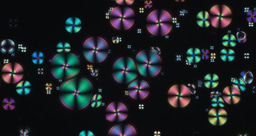Antiferroelectricity predicted in a long-known family of oxides: were antiferroelectrics always there?
Published in Electrical & Electronic Engineering

The electric response of antiferroelectric materials has brought them on the spotlight in the last years for several applications, one of the most promising being large energy density capacitors. Yet, antiferroelectrics are relatively scarce when compared to other ferroic materials such as ferroelectrics or antiferromagnets, and unfortunately most of the solid-state antiferroelectrics contain lead. Hence, several research groups, including ours, are in the quest for new antiferroelectric materials.
Textbook antiferroelectrics were defined by Charles Kittel in 1954 as systems that fulfill two conditions:
1) they display electric dipoles that are arranged in an antipolar fashion (so that the net dipole is zero), and
2) can be brought to a ferroelectric (polar) state by means of an external electric field.
Our first approach to find antiferroelectric materials was to conduct a high-throughput study of instabilities on a large number of oxides in the cubic perovskite structure, in the hope of finding systems with strong antipolar instabilities (thus fulfilling the first condition). The most promising antiferroelectric candidates we identified (namely KVO3 and similar vanadates) showed very strong instabilities, indicating that they will display a crystal structure that is quite far from the perovskite. With the aid of ab initio molecular dynamics simulations we found their ground state structure and its connection to the perovskite phase. Searching the literature we found that the ground state of KVO3 was already known experimentally and had been characterized more than 60 years ago! [1]
Connection between the perovksite phase and the KVO3 antipolar ground state. This video is part of the supplementary files of the paper.
The crystal structure of KVO3 closely resembles that of one of the most abundant mineral structures in our planet: the pyroxene structure. It is formed by VO4 tetrahedra linked by two corners, leading to one-dimensional tetrahedra chains (in pyroxenes, silicon plays the role of the vanadium). Interestingly, the oxygen tetrahedra are not perfectly platonic by construction, since the two oxygen atoms along the backbone of the chain have a very different environment from the two "floating" oxygens. This asymmetry induces the appearance of an electric dipole at each chain link. The oxygens at the apices of the chains point in opposite directions for neighboring chains, yielding an overall antipolar pattern of the dipoles and thus fulfilling the first requisite for KVO3 to be antiferroelectric.
Once we understood the origin of the atomic dipoles, we could envision a polar state that the system could evolve into under an electric field. By rotating every other chain around its backbone, we built a polar polymorph of KVO3 and computed the switching path connecting both structures. We further employed the data obtained in this process to estimate its hysteresis diagram, which at room temperature turns out to display a double-loop, characteristic of antiferroelectric materials.
Switching path between the antipolar ground state and the polar structure of KVO3. This video is part of the supplementary files of the paper.
The discovered antiferroelectrics in their bulk form would need very large fields to be switched, and are therefore not useful for practical purposes yet. We propose different ways to overcome this issue by doping and strain engineering. Most importantly, our findings suggest that long-known compounds may be antiferroelectrics flying under the radar. In particular, the underlying mechanism responsible for antiferroelectricity in KVO3 that we describe should be present in other important mineral families largely abundant on Earth like pyroxenes and pyroxenoids. Were antiferroelectrics always out there, but we just would not see them?
[1] Evans, H.T & Block, S. Crystal structure of KVO3 . Am. Mineralogist 39, 326 (1954)
More details in the article: Hugo Aramberri and Jorge Íñiguez. Antiferroelectricity in a family of pyroxene-like oxides with rich polymorphism, Communications Materials (2020).
Follow the Topic
-
Communications Materials

A selective open access journal from Nature Portfolio publishing high-quality research, reviews and commentary in all areas of materials science.
Related Collections
With Collections, you can get published faster and increase your visibility.
Advanced characterizations of high-entropy materials
Publishing Model: Open Access
Deadline: Dec 31, 2025
Multifunctional hydrogels
Publishing Model: Open Access
Deadline: Feb 28, 2026




Please sign in or register for FREE
If you are a registered user on Research Communities by Springer Nature, please sign in